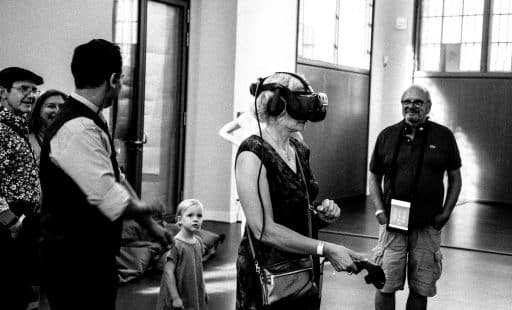Table of Contents
In today’s digital age, visual storytelling has become a powerful tool for marketers and content creators to engage their audience on a deeper level. Leveraging compelling graphics and videos, brands can convey their messages, evoke emotions, and leave a lasting impact. In this blog post, we’ll delve into the art of visual storytelling and explore effective techniques to captivate your audience through stunning visuals and compelling narratives.

Explore the Psychological Impact of Visuals on Storytelling
In marketing and content creation, understanding the psychological impact of visuals on storytelling is essential for crafting compelling narratives that resonate with audiences. This section delves into the profound effects visuals have on shaping perceptions and influencing behaviour, leveraging the human brain’s preference for visual information processing.
The Role of Storytelling in Marketing:
Storytelling lies at the heart of successful marketing campaigns, as it allows brands to connect with consumers on an emotional level, transcending traditional advertising. Storytelling humanizes brands, weaving narratives that resonate with the audience’s values, aspirations, and experiences. However, visuals play a pivotal role in elevating the storytelling process, making it more relatable, authentic, and compelling.
Emotional Resonance:
Visuals have the power to amplify the emotional impact of a story. When combined with a well-crafted narrative, images can intensify the emotions conveyed, making the story more relatable and emotionally resonant. Whether through compelling visuals that portray real-life scenarios or illustrations that ignite the imagination, visuals deepen the connection between the brand and its audience.
Crafting Compelling Graphics for Storytelling
Compelling visuals are crucial for effective storytelling that catches your target audience’s attention and imagination in the ever-evolving world of marketing and content development. The significance of understanding graphic design is emphasised in this part, which also offers advice on how to produce images that effectively and concisely tell your brand’s story.
Design Principles for Visual Impact:
The cornerstone of any pleasing graphic consists in understanding and putting into practice fundamental design concepts. Essential design components like balance, contrast, colour theory, and typography may elevate ordinary images to remarkable ones.
- Balance: In order to achieve balance in a design, visual elements must be distributed evenly to provide a pleasing composition. In order to preserve equilibrium and prevent clutter, it is imperative to understand how positive and negative spaces interact.
- Contrast: By putting items that are different in colour, size, or shape next to one another, contrast gives your images more life and depth. This contrast draws the viewer’s attention to select areas by making them shine and emphasising key pieces of your brand’s narrative.
- Colour Theory: Colour choice is important in narrative because colours generate emotions and transmit messages. By being aware of colour psychology, you can select shades that complement the character of your brand and elicit the necessary emotional response in your target market.
- Typography: The typeface you choose for your graphics is crucial in establishing the tone and message of your brand. Consistent communication with your audience is ensured by choosing legible fonts that complement your brand’s identity.
You can produce visually stunning graphics that not only capture your audience but also successfully convey the story of your company by incorporating these design concepts.
Infographics and Data Visualization:
In a time of information overload, it is essential for audience comprehension and retention to convey complex data and information in a digestible and interesting way. Data visualisation and infographics are potent tools that can turn plain data into eye-catching images, increasing audience engagement with your brand’s narrative.
- Infographics: Infographics are visual representations of information that combine text, images, and design elements to make the content appealing to the eye and simple to comprehend. Infographics are visual representations of data that simplify difficult ideas by arranging data into charts, graphs, and pictures.
- Data visualisation is the process of taking raw data and turning it into visual representations that make it easier to understand and analyse the data. You may draw attention to trends, patterns, and insights by using charts, graphs, and interactive visualisations, which will help your audience quickly understand the importance of the data.
By using infographics and data visualisation in your storytelling, you can convey information in an engaging way that encourages audience participation and deeper understanding. These images not only improve the storytelling process but also strengthen the legitimacy and authority of your brand.
The Power of Video in Storytelling
The interesting medium of video storytelling has a lot of promise for profoundly involving and connecting with your target audience. This section looks at how to make videos that have an emotional impact on viewers while also powerfully and authentically communicating your brand’s message.
Scriptwriting and Storyboarding:
A carefully produced narrative that captures the essence of your brand’s story is at the heart of every great film. The storyline of your video is based on the basis of scriptwriting, which entails creating an engaging script that successfully conveys your message. A strong story should elicit strong feelings from the listener in addition to providing information.
By outlining each scene and shot visually, storyboarding enhances the script. You may visualise the order of scenes, camera perspectives, and transitions by creating a precise storyboard, which will guarantee a fluid and cogent flow for your video. This significant pre-production step provides the entire video production team with a roadmap that directs them towards realising your vision.
Cinematic Techniques for Emotional Impact:
The use of cinematic techniques may assist you in creating particular feelings that increase the impact of your video storytelling. You can enhance the emotional resonance of your film by utilising camera angles, lighting, music, and editing. This will ensure viewers have an engaging visual and audio experience.
- Camera angles: The perspective from which a scene is captured can have a significant impact on how the viewer understands and engages with the narrative. When compared to low-angle images, high-angle shots can suggest helplessness or insignificance. You may direct the emotional response you want your audience to have by carefully selecting camera angles.
- Lighting: Your video’s lighting creates the environment and vibe you want, enhancing the feelings you want to convey. Dramatic lighting can increase suspense and intrigue, but soft, diffused lighting can evoke a feeling of warmth and closeness. Your video gains depth and emotional power when you know how to use lighting to support your story.
- Music: Music may improve the storytelling experience because it is a strong emotional trigger. The correct music can heighten emotions of happiness, sorrow, excitement, or tension, helping the viewer navigate their emotional journey through the video. The total effect of your film is strengthened when you carefully choose music that complements the narrative of your business and the intended emotional tone.
- Editing: The parts of your video come together during the editing stage to form a seamless and emotionally engaging narrative. A key factor in evoking feelings and keeping viewers interested is the tempo, sequencing, and transitions between pictures. Every frame contributes to the emotional flow of the story thanks to expert editing, which results in a fluid and engaging viewing experience.
Integrating Visual Storytelling into Your Marketing Strategy
- Consistency in Branding: Maintaining a consistent visual identity is crucial for reinforcing your brand’s story and enhancing recognition. By aligning the visual elements across all marketing channels, from your website to social media profiles and marketing materials, you establish a cohesive brand presence that leaves a lasting impression on your audience. Consistency builds trust and familiarity, making it easier for your target audience to connect with your brand’s narrative and values.
- Leveraging Social Media Platforms: Social media platforms offer unique opportunities for visual storytelling, each with its distinct features and audience preferences. By understanding the strengths of platforms like Instagram, Facebook, TikTok, and LinkedIn, you can tailor your visual content to maximize engagement. Utilizing eye-catching images, short videos, and infographics, you can create compelling narratives that resonate with your target audience. Engaging with your audience through interactive stories, live videos, and user-generated content further enhances the impact of visual storytelling on social media.
Visual storytelling continues to be a powerful tool for marketers to engage their audience more deeply even as technology develops. By being an expert at creating attractive visuals and videos, you can develop a compelling story that connects with your target audience and increases the effect of your brand on the digital environment. Embrace the potential of visual storytelling to move people, impart knowledge, and create deep connections with your audience.






